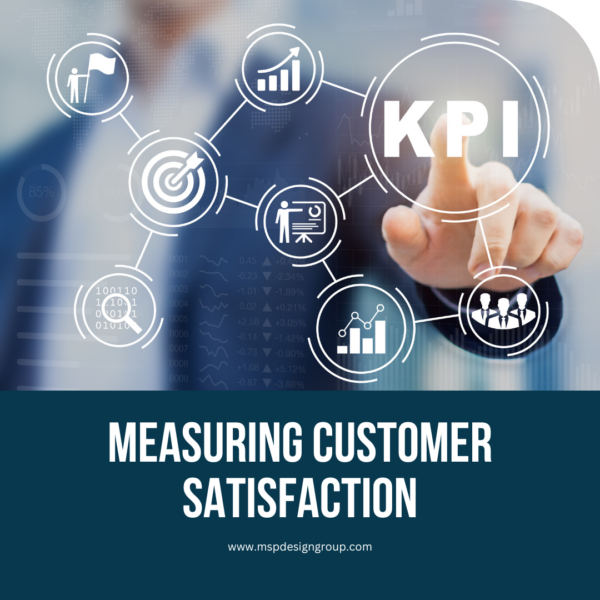
Measuring Customer Satisfaction: Key Metrics You Should Be Monitoring for Happy Customers
Read Time:
2 minutes
Categories:
Date Posted:
March 27, 2023
Hey there! Are you wondering how to measure customer satisfaction and keep your customers happy? Well, you’ve come to the right place! In this blog post, we’re going to talk about some key customer satisfaction metrics that you should be monitoring. So, grab a cup of coffee, get comfy, and let’s dive in!
Net Promoter Score (NPS)
The Net Promoter Score is a customer loyalty metric that measures how likely your customers are to recommend your brand to others. NPS is calculated by asking customers to rate their likelihood of recommending your brand on a scale of 0-10. Customers who give a rating of 9 or 10 are considered “promoters,” while those who give a rating of 6 or below are “detractors.” Your NPS is calculated by subtracting the percentage of detractors from the percentage of promoters.
Customer Satisfaction Score (CSAT)
The Customer Satisfaction Score is a metric that measures how satisfied your customers are with your product or service. CSAT is typically measured by asking customers to rate their satisfaction on a scale of 1-5 or 1-10. The score is then calculated by averaging the responses.
Customer Effort Score (CES)
The Customer Effort Score measures how easy or difficult it was for your customers to accomplish a specific task or goal, such as making a purchase or resolving an issue. CES is measured by asking customers to rate the ease or difficulty of the experience on a scale of 1-5 or 1-10.
Churn Rate
Churn rate measures the percentage of customers who stop doing business with your company over a specific period of time. It’s important to monitor churn rate as it can give you insights into areas where you may need to improve customer experience or address issues that are causing customers to leave.
Customer Retention Rate
Customer retention rate measures the percentage of customers who continue to do business with your company over a specific period of time. This metric can give you insights into how well you’re retaining customers and can help you identify areas where you may need to improve customer experience.
So, there you have it, some key customer satisfaction metrics that you should be monitoring. By tracking these metrics, you can get a better understanding of your customers’ needs and preferences and make data-driven decisions to improve customer experience. Remember, keeping your customers happy is key to building long-term, profitable relationships. So, go ahead and start measuring!
Increase Your Results with Branded Merchandise Solutions

Elevate Your Brand with Custom Merchandise
Our personalized service, global sourcing, local production, and in-house creative team make finding the perfect promotional products a breeze.
Discover the Perfect Promotional Products for Your Brand! Click Here to Get Started.

Design Custom Apparel that People Love to Wear
Our 100,000 sq ft state-of-the-art facility handles a wide range of apparel and decoration methods. Let’s create something on-trend and truly unique for your brand.
Create Trendy, Custom Apparel for Your Brand!

Make A Lasting Impression with Impactful Visual Communications
From signage and wayfinding to environmental graphics, our expert team can create custom solutions that elevate your brand and guide your audience.
Elevate Your Brand with Custom Visual Communications! Click Here to Learn More.
 Online Solutions to Elevate Your Brand
Online Solutions to Elevate Your Brand
Our ecommerce solutions are perfect for gifting, rewards and recognition programs, team gear, fundraising, or selling your products directly to customers. Our advanced platforms offer seamless shopping experiences, fun gifting options, and secure transactions.
Boost Your Brand with Our Ecommerce Solutions! Click Here to Explore.
 We Do the Heavy Lifting So You Don’t Have To
We Do the Heavy Lifting So You Don’t Have To
MSP Design Group provides an in-house, NetSuite enabled kitting, warehouse and fulfillment facility. We provide end-to-end solutions tailored to your unique needs. With complete control of our processes, your program is in excellent hands.
Streamline Your Operations with Our End-to-End Solutions!
 Our In-House Creative Team Has You Covered
Our In-House Creative Team Has You Covered
Looking to create your own unique apparel designs? Envision a unique product that doesn’t exist yet? Want to create a new experience? MSP Design Group’s team of in-house creatives, designers, merchandisers and program experts are ready to help bring your vision to life.
Bring Your Vision to Life with Our In-House Creative Team! Click Here to Learn More.






